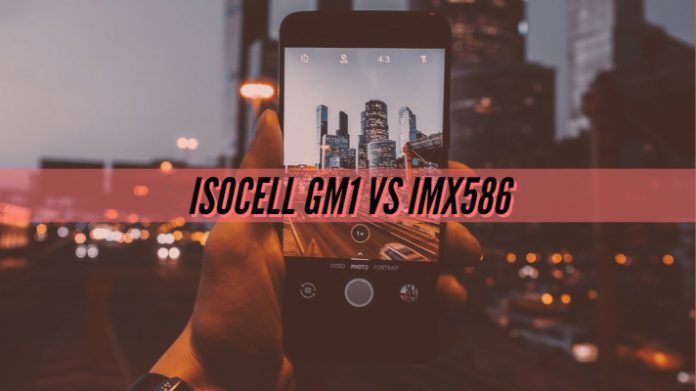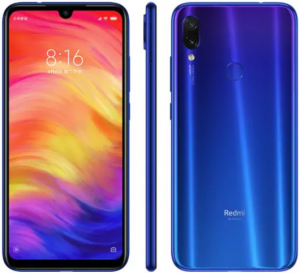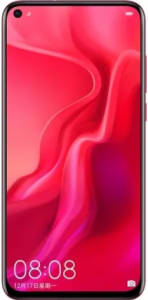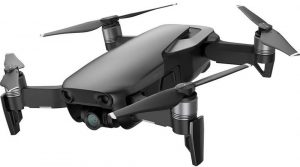Smartphone photography has grown by better standards aided by excellent camera sensors. The megapixel count has gone through a significant upgrade over the years. Gone are the days we are satisfied with a Megapixel count of just 3 MP. Moving beyond the 12 MP or 24 MP count, we have now come to a day where we have been witnessing a whopping Megapixel count of 48 MP. Recently we have seen the launch of two excellent 48 MP sensors. We will make a comparison between the two outstanding options in this sphere – Samsung Isocell GM1 and Sony IMX586. How do they compare against one another (Isocell GM1 vs IMX586) and how are they similar to one another? Check it out in this discussion.
Related: Sony IMX519 vs. IMX486 vs. IMX386 vs. IMX586 vs. IMX377
Isocell GM1 vs. IMX486 vs. IMX386 vs. IMX586 vs. IMX377 – Comparison Table
| Specification | Isocell GM1
| Sony Exmor RS IMX 486
| IMX386 | IMX 586 | IMX377 |
| Effective Pixels / Video | 48 MP | 12 MP (4032 x 3016) | 12 MP (3968 x 2976) @ 4:3 9.03 MP @ 17:9 | 48 MP (8000 (H) × 6000 (V)) 4K(4096×2160) @ 90fps 1080p @ 240fps 720p, 480p | 12.2 MP (4032 x 3024) 35 FPS @12 Bit 40 FPS @ 10 Bit
|
| Sensor Size | 6.4 * 4.8 mm or 1/2″ | 6.2 mm (1/2.9”) | 6.2 mm(1/2.9”) | 8.0 mm diagonal (1/2-type) | 7.81 mm (1/2.3″) |
| Unit Cell Size | 0.8 um | 1.25 um | 1.25 Microns | 1.6 μm pixels | 1.55 μm |
| Sensitivity | – | – | – | 133-LSB | |
| Sensor Saturation Signal | – | – | – | 4500e | |
| Video Output | – | – | – | MIPI C-PHY1.0 (3 trio) / D-PHY 1.2 (4 lane) | – |
| Subpixel Layout | RGB | RGB | RGB | RGB | RGB (On-chip mosaic filters) |
| Phase Detection Autofocus | Yes | Yes | Yes | Yes | Yes |
| Gyro Image Stabilization | – | – | – | ||
| Built-in DRAM Memory | – | – | – | ||
| Release Date | October 2018 | February 2018 | Jul 2016 | Jul 2018 | April 2015 |
| Utilizing Devices | Redmi Note 7 | Xiaomi Redmi Note 5 Pro Xiaomi Mi 6X | Huawei Nova 4 | LG Nexus 5X Huawei Nexus 6P HTC 10 Xiaomi – Yi 4K Action Camera DJI Mavic Pro (Drone) |
Samsung ISOCELL GM1 – An Overview
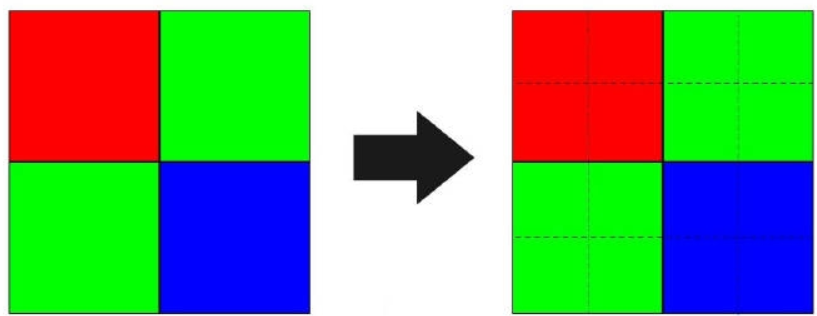
One of the significant performance improvement observed on the Samsung ISOCELL GM1 is the smallest pixels so far at 0.8-micrometer. This should be an excellent option in terms of the smaller camera modules. This aids in greater flexibility in improving the image quality of your smartphone cameras.
The Samsung ISOCELL GM1 will offer you a 48 MP sensor. To put it in the words of Ben K. Hur, vice president of System LSI marketing at Samsung Electronics, “ Demand for ultra-small, high-resolution image sensors are growing as smartphones evolve…we are committed to driving innovation in image sensor technologies.”
The sensor is based on the latest Samsung technology ISOCELL Plus. The improved pixel isolation technology from Samsung has been capable of optimizing the performance of smaller-dimension pixels. This has been helpful in the high-resolution cameras that have become one of the essential options.
The new sensor from Samsung is have gone into large scale production from the fourth quarter in 2018. We expect the camera modules are coming up with the Samsung S10, and S10+ devices planned to launch next year.
Sony IMX586 – A Sneak Peek
That brings to the competitor to Samsung ISOCELL GM1 from none other than Sony. Sony has been a fierce competitor to Samsung in terms of camera modules. The Sony IMX586 is a strong competitor to the Samsung offering and has been introduced with the pixel count of, yes – what else, 48 MP.
Once again, the camera module comes with the same 0.8 micrometers and has been offered to the smartphones launched from the later part of 2018. The press release has stated that the high pixel count will provide high-quality photos. And to think you would get an excellent performance even when you are using a digital zoom. The sensor comes with a Quad Bayer 2×2 pixel array. This will ensure that you have access to bright low light imagery. It will also help you shoot better videos even at night.
In effect, you will be getting a high resolution 48 MP shots in the daylight or a well-lit environment. For shooting the images and videos at night, you will be shooting in a classic 12 MP standard for better performance. You have access to the 4K recording at 90 fps and 1080p at 240 fps.
The specifications of the Sony IMX586 as available on the official website read –
Features | Sony IMX586 |
| Effective Pixels | 6000 x 8000 |
| Unit cell size | 0.8μm(H)×0.8μm(V) |
| Full frame rate | 30 fps |
| Video recording | 4K at 90 fps 1080p at 240 fps 720p at 480 fps |
| Functions | image plane phase-difference AF, HDR imaging |
| Color filter array | Quad Bayer array |
How do the two sensors differ from one another? (Isocell GM1 vs IMX586)
As we have already been observed, both the Samsung ISOCELL GM1 vs Sony IMX586 come with the same functionality and features. However, the Sony IMX586 comes with an added advantage.
The Samsung sensor offers you 48 MP resolution, but in effect – you get only 12 MP resolution. Of course, the camera module can output a 48 MP image, but it would be an extrapolated result. The Sony IMX586 indeed offers you a 48 MP resolution and delivers excellent performance in brightly lit situations.
Samsung has not come forward with any specific specifications as such. We scraped through their website for the relevant information, but it only focusses on the smaller sensor size and the 48 MP resolution, but there is no further information available about other specifications. Samsung has been quite secretive with the details about the features and specifications.
The 48 MP Count – It isn’t a new technology
The story of 48 MP sensors is not exactly something new. While it has been making heads turn, it didn’t matter when Nokia launched the Nokia Pureview 808 with the 48 MP sensor and a few added advantages.
The technology was way ahead of its time. Sadly enough, the tech world could not understand the importance back then. It wasn’t only the megapixel count mattered back then, but there were excellent optics and usage of Carl Optics lens for enhanced performance.
The Competition
The rivalry (or should we say healthy competition because of the presence of the sensors from both the manufacturers on the same phone – a classic example can be Redmi Y2 from Xiaomi) between Samsung and Sony has been offering excellent performance improvements for the consumers.
The two new sensors are entirely identical in terms of performance. The functionality of these cameras is entirely similar. The spec sheet is almost identical in most of the aspects. In any case, except for the significant difference we outlined in the above discussion, the two sensors offer you nearly similar features and functions.
The Concluding Thoughts
That was a fair competition between the Samsung ISOCELL GM1 vs Sony IMX586. You would find that the two sensors come with most of the identical features and functions. The real test between the two competing camera module manufacturers would be evident only when the two are put to the actual performance. With the Samsung ISOCELL GM1 available on the Remi Note 7 and the Sony IMX586 coming on the new Huawei devices, we may be able to arrive at the real performance test after the consumer reviews coming up from the respective users.
Have you checked the sensor performance on any of the smartphones? Do share your inputs with us.

